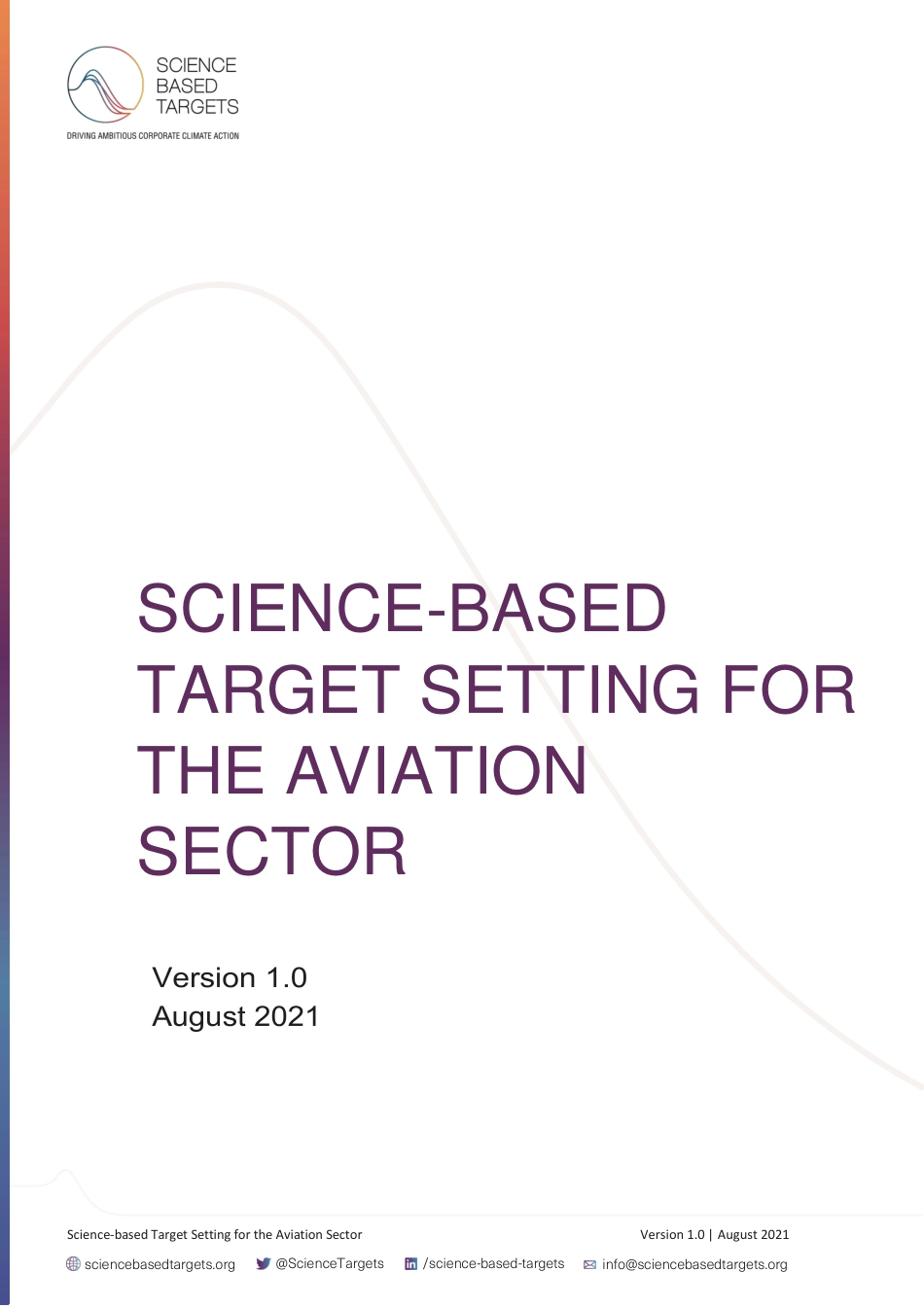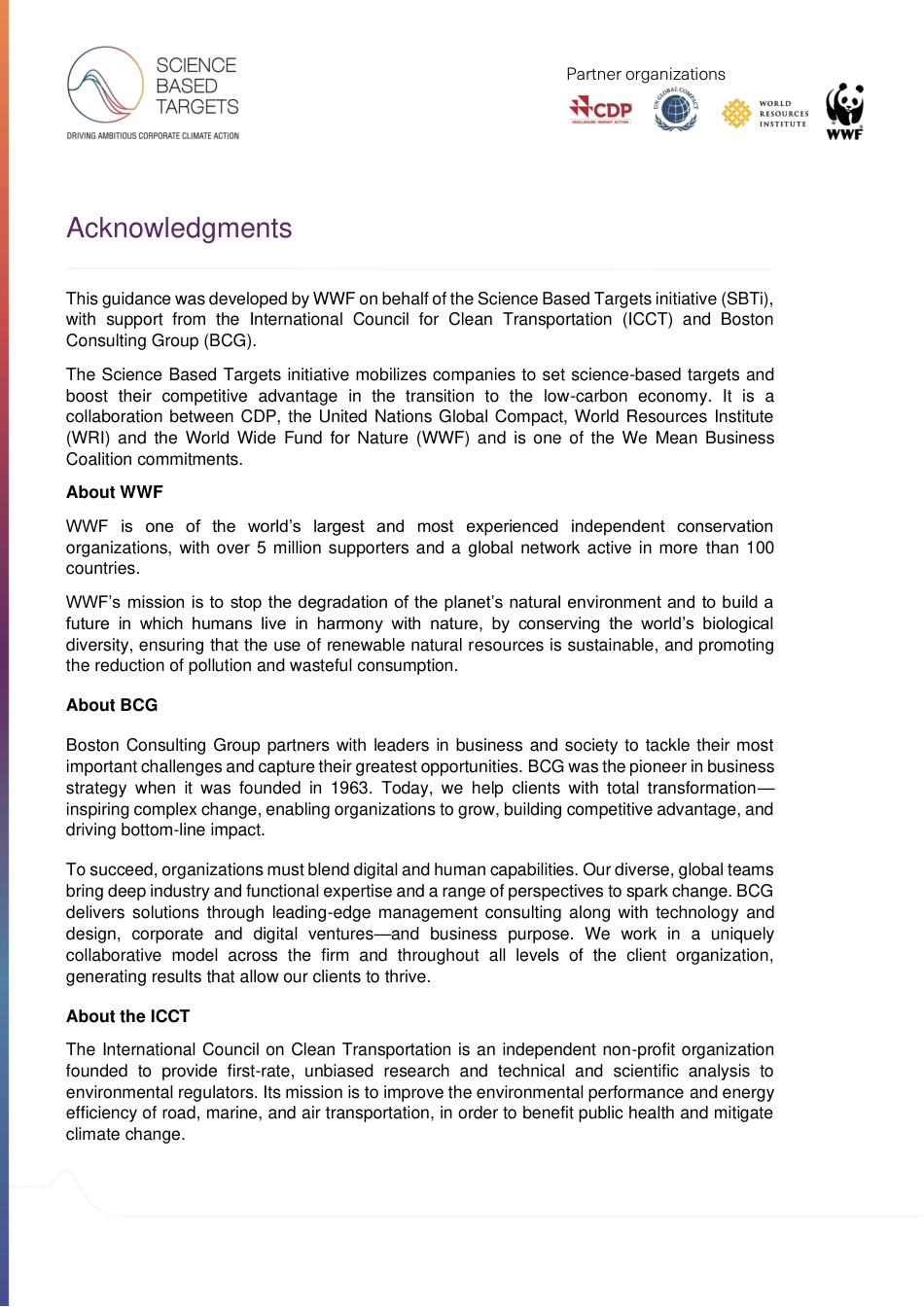Science-based Target Setting for the Aviation Sector sciencebasedtargets.org @ScienceTargets /science-based-targets Version 1.0 | August 2021 info@sciencebasedtargets.org SCIENCE-BASED TARGET SETTING FOR THE AVIATION SECTORPartner organizations Acknowledgments This guidance was developed by WWF on behalf of the Science Based Targets initiative (SBTi), with support from the International Council for Clean Transportation (ICCT) and Boston Consulting Group (BCG). The Science Based Targets initiative mobilizes companies to set science-based targets and boost their competitive advantage in the transition to the low-carbon economy. It is a collaboration between CDP, the United Nations Global Compact, World Resources Institute (WRI) and the World Wide Fund for Nature (WWF) and is one of the We Mean Business Coalition commitments. About WWF WWF is one of the world’s largest and most experienced independent conservation organizations, with over 5 million supporters and a global network active in more than 100 countries. WWF’s mission is to stop the degradation of the planet’s natural environment and to build a future in which humans live in harmony with nature, by conserving the world’s biological diversity, ensuring that the use of renewable natural resources is sustainable, and promoting the reduction of pollution and wasteful consumption. About BCG Boston Consulting Group partners with leaders in business and society to tackle their most important challenges and capture their greatest opportunities. BCG was the pioneer in business strategy when it was founded in 1963. Today, we help clients with total transformation—inspiring complex change, enabling organizations to grow, building competitive advantage, and driving bottom-...



